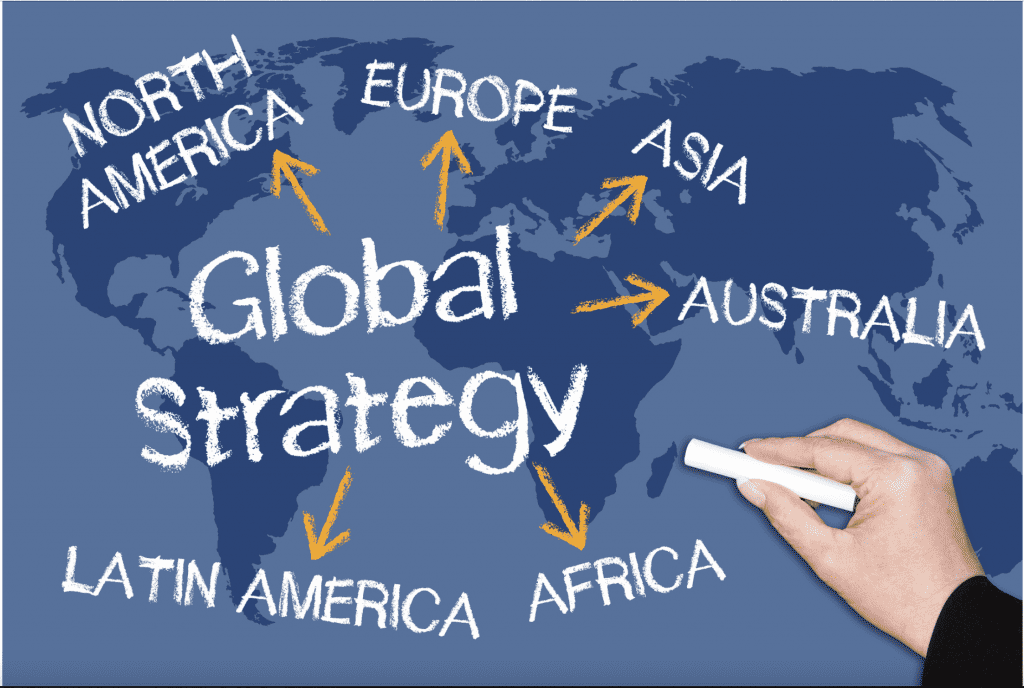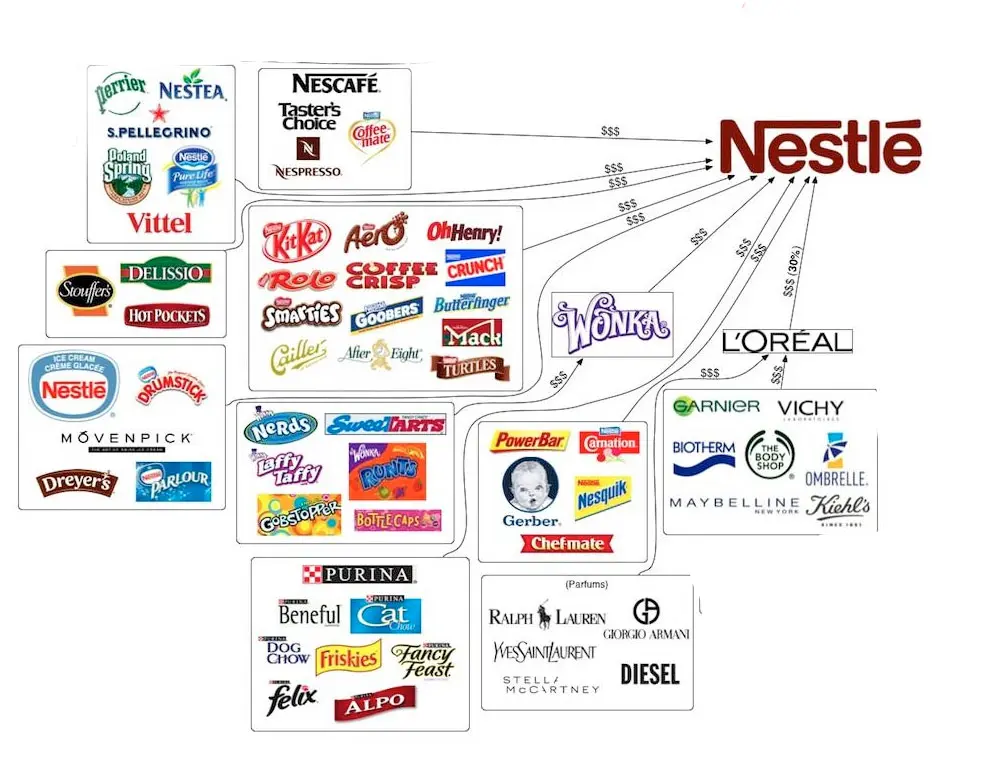Having a global marketing strategy to reach worldwide markets provides enormous benefits: consistent messaging, exciting visuals, improved brand recognition, and the opportunity to build one and use it everywhere. However, this approach might not work effectively in certain locals due to differences in culture and needs. Using global standards or making it "glocal" is what many companies are working out. This article can help to explain the concept of global marketing strategy clearer and more insightful.

Table of Contents
- What is a Global Marketing Strategy?
- International vs Global Marketing Strategy
- Successful Examples of Global Marketing Strategy
- Key Takeaways
- Frequently Asked Questions
More Tips from AhSlides
- 15 Marketing Strategy Examples That Drives Business Success
- Marketing Presentation Guide – Tips to Nail It in 2023
- How to Sell Anything | 12 Excellent Sales Techniques in 2023
What is a Global Marketing Strategy?
Definition of Global Marketing Strategy
The purpose of a Global marketing strategy is to provide a standard product for all foreign markets as the company considers the global market as a whole. It is a centralized approach that involves developing and implementing a single marketing strategy for all global markets. This strategy is typically based on the assumption that consumers around the world have similar needs and desires. Global marketers may use standardized products, branding, and marketing campaigns across all markets, or they may make minor adjustments to account for cultural differences.
Benefits of Global Marketing Strategy
Implementing a global marketing strategy can lead to many benefits.
- Cost reduction: Consolidating national marketing functions can lead to significant savings in both workforce and materials. By eliminating duplicative activities, personal outlays can be reduced. Additionally, producing global advertisements, commercials, and promotional materials can be more cost-effective than creating separate campaigns for each market. Standardizing packaging can also result in savings, as it reduces inventory costs. Given that inventory carrying costs can account for up to 20% of sales, even a small reduction in inventory can have a significant impact on profitability
- Improved Products and Program Effectiveness: This may often be the greatest advantage of a global marketing strategy. The saved money can be used to make a few focused programs work better. In the business world, good ideas are not easy to come by. So, when a global marketing plan helps to spread a good idea despite local challenges, it often raises the effectiveness of the program when measured on a worldwide basis.
- Enhanced Customer Preference: A global business strategy is becoming increasingly important in today's world due to the rise in the availability of information from various sources across different countries, and the increase in travel across national borders. It helps build brand recognition and enhances customer preferences through reinforcement. By using a uniform marketing message, whether through a brand name, packaging, or advertisement, people become more aware and knowledgeable about the product or service, which can ultimately shape their attitudes toward it.
- Increased Competitive Advantage: Many small firms cannot compete with global brands due to limits in resources. Thus, one effective solution is having a concentrated global marketing strategy that could bring more competitive advantages for the smaller firm to compete with a larger competitor more effectively.
Limitations of Global Marketing Strategy
It is obvious that while there is an increase in global culture, the tastes and preferences are still different in every nation. For example, E-commerce cannot be expanded without any need for local and regional adaptation. To effectively target and reach global consumers online, many companies still need to address the barriers in communication by developing them in their languages and coordinating their cultural value systems. Not to mention even in supposedly similar cultures, there can be huge differences in what are effective marketing campaigns, such as a successful ad campaign of The Body Shop in Britain doesn't work well in the United States.
International vs Global Marketing Strategy
What is the key difference between Global marketing strategy and International marketing strategy?
Unlikely global marketing, International marketing is the process of adapting a company's products and services to the needs of specific foreign markets. This often involves conducting extensive market research to understand the cultural, legal, and economic factors that influence consumer behavior in each target market. International marketers may also need to modify their products and services to meet local preferences, such as translating packaging and marketing materials into local languages.
| Characteristic | International marketing | Global Marketing |
| Focus | Adapting products and services to specific foreign markets | Developing a single marketing strategy for all global markets |
| Approach | Decentralized | Centralized |
| Product strategy | May adapt products to meet local preferences | May use standardized products across all markets |
| Branding strategy | May adapt branding to reflect local culture | May use standardized branding across all markets |
| Marketing strategy | May adapt marketing campaigns to reflect local culture | May use standardized marketing campaigns across all markets |
Successful Examples of Global Marketing Strategy
Many multinational companies have earned success by increasingly utilizing global marketing. For example, Unilever, P&G, and Nestlé with their common brand name applied to many products in almost all nations and regions. Pepsi has a consistent message in its marketing channels across the globe—that of youthfulness and fun as a part of the experience of drinking Pepsi anywhere in the world. Air BnB, Google, and Microsoft are giant companies that sell their standardized products and services around the world.
Another great example is Disney with many efforts on transforming its traditional marketing methods with some alternative media. Now the company is launching a multi-player online game—Virtual Magic Kingdom—intended to attract more kids to Disney resorts.
Procter & Gamble doesn't follow traditionally centralized R&D in headquarters, rather, it sets up major R&D facilities in each of its major markets in the Triad—North America, Japan, and Western Europe— and by putting together the pertinent findings from each of the laboratories. P & G was able to introduce a much better product than would otherwise be possible and increase its chances of success.

Key Takeaways
Targeting different cultures is all about understanding how and why there are differences. The global marketing plan is not only about standardization, it needs a localization approach to make sure to make the most of its market. Learning from successful examples of global strategy can be a good start for new companies looking for a way to broaden their brand presence in foreign markets.
💡Want to learn about making an engaging presentation in the marketing field, where you can attract more investment? Check out AhaSlides right now to get free updated templates!
Frequently Asked Questions
What are the three types of global marketing strategies?
There are three types of global marketing, including standardization, international, and multinational strategy. In a standardization strategy, the same products are sold in every location. An international strategy involves importing and exporting products. When you use a multinational strategy, you can deliver your products and services to each market.
What is Nike's global marketing strategy?
Nike has strengthened its global presence by carefully selecting international sponsorships. While they aim to promote standardization in product design, and colors in many international markets, they use different marketing campaigns in certain countries.
What are the 4 basic international strategies?
Multinational corporations often choose from among four basic international strategies: (1) international (2) multi-domestic, (3) global, and (4) transnational. This aims to deliver a better global brand in the local needs and cultural differences while maintaining low cost and efficiency.
Ref: nscpolteksby ebook | Forbes







